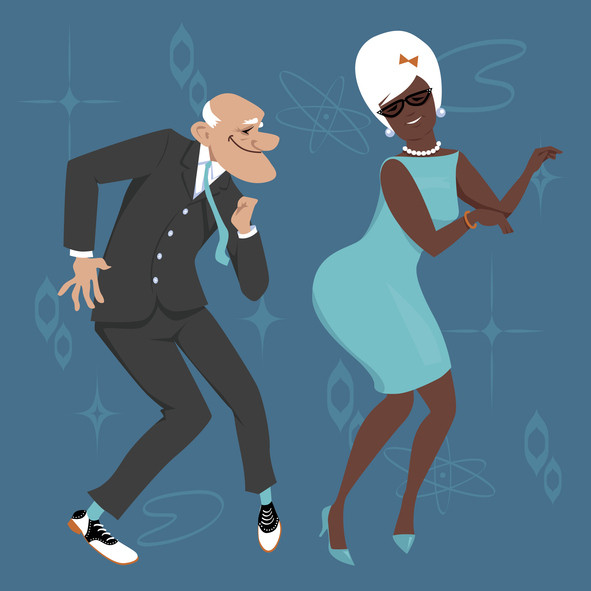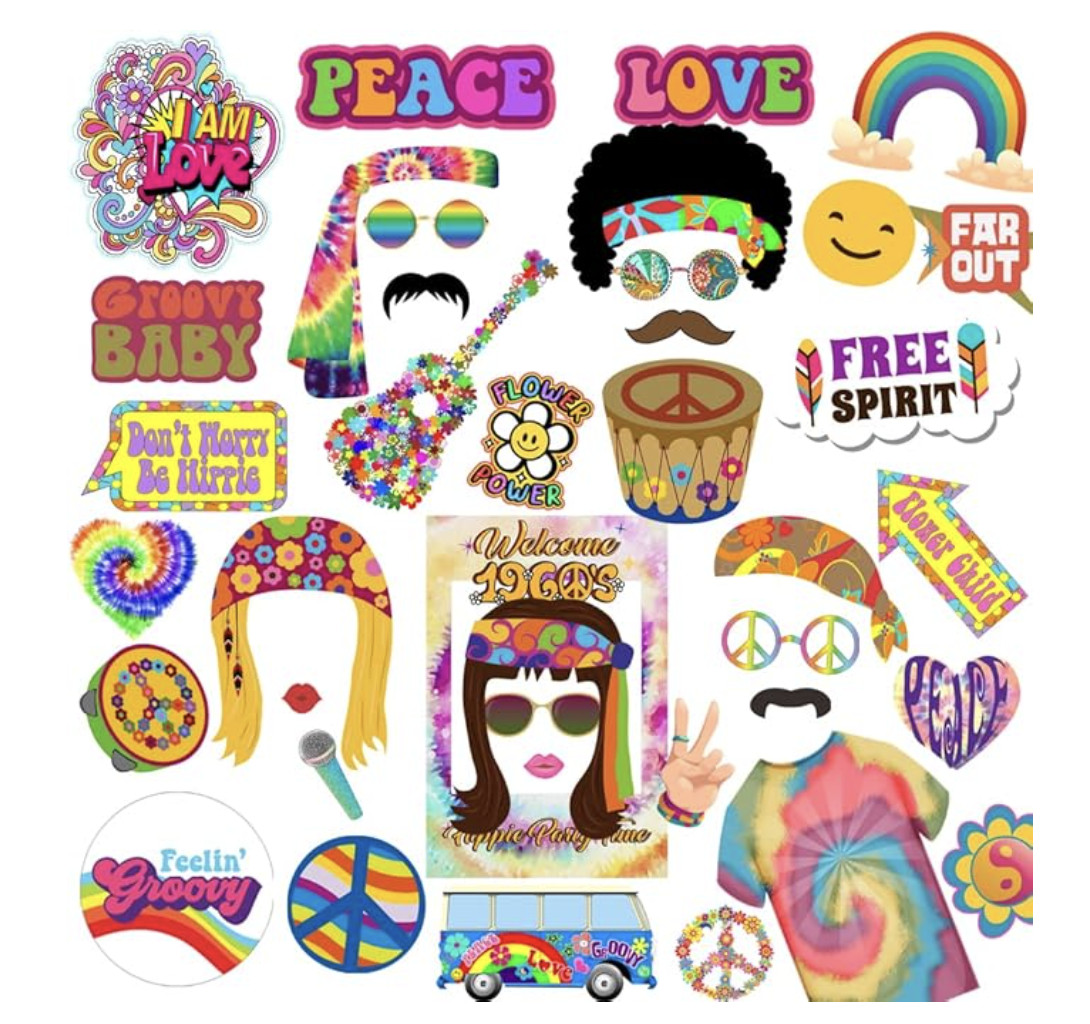For many, the 1960s evokes images of bell-bottoms, vibrant colors, and a sense of cultural revolution. But beyond the fashion and social changes, the decade was also defined by its incredibly dynamic and infectious dance crazes. If you grew up in the sixties, or simply love the era’s vibe, you’ll remember the explosion of unique dances that got everyone moving. Let’s take a nostalgic trip back to the dance floor and explore some of the most iconic dances of the 1960s. Get ready to twist, mash, and pony your way through this groovy decade!
Stepping Back in Time: The Dance Revolution of the 60s
Music and dance were inseparable in the 1960s, reflecting a spirit of freedom and social connection. Unlike previous eras with more formal dance styles, the sixties ushered in an era of individual expression and free-form movement. From school playgrounds to packed dance halls, everyone was eager to learn the latest steps and show off their moves. Television shows like American Bandstand, hosted by the legendary Dick Clark, played a pivotal role in popularizing these dances, broadcasting the latest trends directly into living rooms across America. For teenagers and young adults, learning the Twist, the Mashed Potato, or the Pony wasn’t just about fun; it was about being part of a cultural phenomenon.
The Line-Up: Iconic 1960s Dances You Need to Know
The 1960s weren’t short on dance innovation. Here’s a rundown of some of the most memorable dances that defined the decade:
1. The Twist: The Dance Craze That Started It All
The Twist is arguably the defining dance of the 1960s. While the song “The Twist” was originally released in 1959 by Hank Ballard, it was Chubby Checker’s 1960 cover that truly ignited the global dance craze. Simple yet incredibly catchy, The Twist involved separating your feet about shoulder-width apart, bending your knees slightly, and then swiveling your hips and torso as if you were drying your backside with a towel. Its appeal lay in its easy-to-learn steps and its break from traditional partner dances, encouraging individual expression on the dance floor. The Twist transcended age and social barriers, becoming a phenomenon that even adults embraced.
 Chubby Checker performing the Twist, the iconic dance of the 1960s.
Chubby Checker performing the Twist, the iconic dance of the 1960s.
2. Mashed Potato: Serving Up Some Funky Moves
Emerging in the early 1960s, the Mashed Potato was another dance that encouraged individuality and playful movement. Unlike The Twist, the Mashed Potato wasn’t tied to a single song, but Dee Dee Sharp’s hit “Mashed Potato Time” certainly cemented its popularity. The dance involves moving your feet in and out while pivoting your heels and toes, mimicking the action of mashing potatoes. It was a fun, energetic dance that was easy to adapt and personalize, making it a staple at parties and dance halls. The Mashed Potato often incorporated arm movements and variations, allowing dancers to add their own flair.
3. The Monster Mash: A Spooky Season Staple
While primarily known as a Halloween novelty song, “Monster Mash” by Bobby “Boris” Pickett also inspired a dance move. Related to the Mashed Potato in its basic rhythm, The Monster Mash dance involved jerky, Frankenstein-like arm and leg movements, fitting perfectly with the song’s spooky theme. This dance became a fun, seasonal favorite, particularly around Halloween, and remains a nostalgic throwback to the era’s playful side. It’s one of the few 60s dances that continues to be enjoyed across generations during Halloween festivities.
4. The Madison: A Line Dance for Everyone
The Madison was a popular line dance that gained traction in the early 1960s and remained popular well into the 1970s. Characterized by its structured steps called out by a leader or song, The Madison encouraged group participation and synchronization. The dance typically involved a sequence of steps including side steps, back steps, and forward kicks, creating a visually engaging and inclusive dance experience. Instructional videos and records helped spread the Madison steps, making it a common sight at social gatherings and school dances.
 Instructional dance scene demonstrating the Madison, a popular line dance from the 1960s.
Instructional dance scene demonstrating the Madison, a popular line dance from the 1960s.
5. The Hully Gully: Shoulder Shakes and Knee Wiggles
The Hully Gully was another energetic dance craze of the mid-1960s, characterized by its catchy phrase: “Shake your shoulders and wiggle your knees.” The dance involved simple, repetitive movements focusing on shoulder shaking and knee wiggling, often performed in a line or circle. The Olympics’ song “Hully Gully” popularized the dance, making it a fun and lighthearted addition to the 60s dance repertoire. Its easy-to-learn steps and focus on upper body movement made it accessible and enjoyable for all ages.
6. The Watusi: A Beat with Latin Flair
Originating from Puerto Rican jazz musician Ray Barretto’s 1961 hit “El Watusi,” The Watusi dance brought a Latin rhythm and feel to the 1960s dance scene. Characterized by its fast-paced, rhythmic steps and arm movements, The Watusi incorporated elements of Latin dance styles. It involved quick footwork and often included arm movements that mimicked a kind of strut or swagger. The Watusi added a vibrant and diverse flavor to the decade’s dance landscape, reflecting the growing cultural influences in popular music.
7. The Pony: Galloping onto the Dance Floor
Chubby Checker, already famous for The Twist, introduced another dance craze with The Pony, inspired by his song “Pony Time.” The Pony mimicked the movements of riding a pony, with dancers stepping forward and back while hitching their shoulders and neck in a galloping motion. It was a playful and energetic dance that was easy to learn and fun to perform, particularly to the upbeat rhythm of “Pony Time.” Like The Twist, The Pony became a widely recognized and enjoyed dance across the nation.
8. The Hitch Hike: Dancing Down the Road
Marvin Gaye’s 1962 hit “Hitch Hike” inspired a dance move of the same name. The Hitch Hike dance involved a simple, repetitive arm motion mimicking the act of hitchhiking, combined with basic steps in place or side-to-side. Its simplicity and connection to a popular song made it an instant hit. The Hitch Hike was a relaxed and cool dance, reflecting the smooth vibe of Marvin Gaye’s music and adding to the variety of arm-focused dances from the era.
9. The Swim: Making Waves on the Dance Floor
The Swim was a uniquely themed dance where participants pretended to swim on the dance floor. With arm movements mimicking various swimming strokes like the breaststroke or freestyle, The Swim was a novelty dance that encouraged creativity and humor. Bobby Freeman’s hit song “C’mon and Swim” popularized the dance, making it a fun and memorable addition to 60s dance parties. Its lighthearted and imaginative nature made it stand out among the more conventional dance styles of the time.
10. The Locomotion: Dancing in a Train
“The Locomotion,” popularized by Little Eva, was a fun and quirky dance that mimicked the motion of a train. Dancers formed a line, holding onto the shoulders of the person in front, and moved forward in a chain, chugging and swaying like a train on tracks. Its novelty and group participation aspect made it a hit at parties and social events. The Locomotion was a silly and engaging dance that perfectly captured the playful spirit of the 1960s.
11. The Jerk: Sharp and Snappy Moves
The Jerk involved sharp, jerky arm movements combined with stepping in place. Popularized by The Larks’ song “The Jerk” in 1964, the dance focused on quick, snapping motions of the arms, adding a different kind of energy to the dance floor. The Jerk required a bit more coordination and sharpness than some of the other dances, offering a more dynamic and visually striking style. Its distinctive arm movements made it easily recognizable and fun to master.
12. The Boogaloo: Fusion of R&B and Latin Rhythms
Emerging from African American communities and gaining nationwide popularity by the mid-1960s, The Boogaloo was a dance style that reflected a fusion of R&B with Latin influences. Characterized by smooth, fluid movements, incorporating shoulder action and intricate footwork, The Boogaloo was a more complex and improvisational dance form compared to some of the simpler crazes. James Brown often incorporated Boogaloo moves into his performances, further popularizing the style. The Boogaloo represented a blend of cultural influences and a move towards more expressive and rhythmically intricate dances.
1960s Dance Fashion: Dressing the Part
No exploration of 1960s dances is complete without acknowledging the era’s iconic fashion. The clothing was as much a part of the dance culture as the music and the moves themselves. Mini skirts, go-go boots, A-line dresses, and vibrant, psychedelic prints defined the look of the decade. Fashion became a form of self-expression and liberation, mirroring the free spirit of the dances. Dressing up for a dance was an event in itself, with careful attention paid to creating the perfect “mod” or “groovy” ensemble. The fashion trends of the 60s amplified the energy and visual appeal of the dances, creating a complete cultural package.
The Enduring Legacy: 1960s Dances in Modern Times
The dances of the 1960s weren’t just a fleeting fad; they left a lasting imprint on dance culture. Many of the moves and the spirit of these dances have been incorporated into modern dance styles and continue to resurface in popular culture. From Zumba classes borrowing the energy of The Twist to wedding dances incorporating line dance elements reminiscent of The Madison, the influence is undeniable. You can even spot nods to 60s dance moves in contemporary music videos and dance shows, demonstrating their timeless appeal. The 1960s dance revolution continues to inspire movement and fun, proving that these groovy steps are here to stay.
Get Your Groove On: Recreating 1960s Dance Moves Today
Feeling inspired to step back in time? Hosting a 1960s-themed dance party is a fantastic way to relive the era and share the fun with friends. Put on a playlist of 60s hits, encourage your guests to dress in their best vintage attire, and let the dance revolution begin! Many online tutorials are available to help you learn or refresh your memory of these classic steps. Whether you’re a seasoned dancer or just looking for a fun way to get moving, the dances of the 1960s offer something for everyone.
So, which 1960s dance is your favorite? Dust off those dancing shoes, put on some classic tunes, and get ready to experience the joy and energy of the 1960s dance floor! Let’s bring back the groovy moves and start a new dance revolution!

